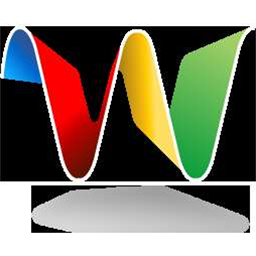Google Wave (see screenshot gallery right), announced at Google's IO developer event in San Francisco, is an Ajax-based communications tool hosted in the cloud that blurs the boundaries between an e-mail message, instant message and rich-text document.
The technology was built by Danish-born and US-educated brothers Lars and Jens Rasmussen, now based in Sydney's Google office.
The Rasmussen brothers were also the driving force behind the team that invented the mapping technology behind Google Maps.
Today they lead a fifty-person team within Google's Sydney office, which for the last two years has secretly been developing a new web-based communication and document prototype under the project name "walkabout".
A "Wave", explains Lars Rasmussen, is "equal parts conversation and document, where people can communicate and work together with richly formatted text, photos, videos, maps, and more."
Rasmussen said the brothers embarked on their journey believing e-mail to be a dinosaur.
"Email today is the most popular way to communicate on the Internet - which is remarkable because e-mail was invented 40 years ago, before the Internet, before the world wide web, without the experience of instant messaging, SMS, bulletin boards, blogs, social networks," he told developers.
"Email mimics snail mail - you write a message and send it to one or more recipients. Then a client program collates related messages into conversations."
Google Wave, he said, was he and his brother's imagining of "what e-mail would look like if it was invented today."
How it works
A Wave is purported to improve on e-mail and instant messaging in several ways:
- The structure of the threaded, email-like conversations is more versatile - adding real-time, collaborative editing and in-line discussion.
- Participants in a 'Wave' can opt for a setting in which others can see what they are typing in real-time, allowing for faster collaboration.
- A message can be edited collaboratively as a dynamic document, with changes logged in a wiki-like fashion and reviewed via a "playback" feature.
- Google Gears can be used to create a real-time experience for sharing attachments such as photos within a Wave. Google intends to develop capabilities to attach video and audio files with similarly low latency.
- Easy to publish to external sources - by adding a blog site as a participant in the Wave conversation, an external blog can automatically publish any content created in the Wave (presumably via RSS) in real-time. Comments on the blog site can also appear in the Wave client in real-time.
Google Wave API
Rasmussen is hoping to mimic the success of Google Maps by releasing an API for Google Wave to make it extensible and available to third parties.
In his address at Google IO, Rasmussen demonstrated some extensible widgets to Google Wave, including a spellchecker, an embedded game and a widget that embeds Google Search results into a Wave conversation.
"[The Maps team] got an incredible amount of mileage from allowing third parties to put our maps on their web pages," he said. "So we'll let third parties put waves on their web pages."
Google has not released a date for public release of Google Wave, but will share it with its development community "for several months" first.
"Google Wave is very open and extensible, and we're inviting developers to add stuff before our public launch," Rasmussen said.







_(22).jpg&h=140&w=231&c=1&s=0)

_(20).jpg&h=140&w=231&c=1&s=0)





 iTnews Executive Retreat - Security Leaders Edition
iTnews Executive Retreat - Security Leaders Edition











_(1).jpg&h=140&w=231&c=1&s=0)



